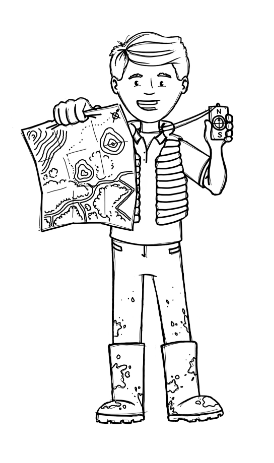.jpg)

For Humanities we are following the Opening Worlds Curriculum in KS2. This is a knowledge-rich programme for teaching history and geography in Years 3 to 6. The programme readily lends itself to cross curricular planning and has been developed by Christine Counsell and Steve Mastin, two leading curriculum minds in the UK.
Opening Worlds does more than merely meet the requirements of the National Curriculum for history and geography. Sequencing, and the inter-linking nature of both subjects, ensure that children are able to develop a rich, secure vocabulary by a careful system of 'revisiting' and practice.
Opening Worlds covers a range of cultural, historical and ethical backgrounds and offers purposeful and meaningful experiences to apply, share and develop this knowledge . Our diverse, culturally rich, wide-scoping and rigorous/coherent curriculum is underpinned by the teaching of basic skills, knowledge, concepts and values in a rigorous and coherent way. Explicit links to story telling and creativity are made to ensure children to engage and enthuse learners. Many enhancement and enrichment activities are used throughout the curriculum to engage learners and create purposeful, high leverage outcomes that give children the opportunity to use and apply their developing knowledge and skills. Our aim is to create an environment that prompts curiosity, critical thinking and allows learners to connect strands of learning across all aspects of the curriculum.
For further information, please see the Opening Worlds Rationale below or visit their website here.
Geography Documents
Geography Intent:
"The study of geography is about more than just memorising places on a map. It's about understanding the complexity of our world, appreciating the diversity of cultures that exists across our continents. And in the end, it's about using all that knowledge to help bridge divides and bring people together."
Barrack Obama
Geography Intent
Geography Key Facts Week:
Every year in Spring 2 we have our Geography Key Facts Week. Each year group has a set of key facts they need to learn. This is very much a focus on the locational knowledge pupils should have by the end of each key stage:
Please click on the link below to see the Knowledge organisers for each year group.
Locational knowledge KS1:
- name and locate the world’s seven continents and five oceans
- name, locate and identify characteristics of the four countries and capital cities of the United Kingdom and its surrounding seas
Locational knowledge KS2:
- locate the world’s countries, using maps to focus on Europe (including the location of Russia) and North and South America, concentrating on their environmental regions, key physical and human characteristics, countries, and major cities
- name and locate counties and cities of the United Kingdom, geographical regions and their identifying human and physical characteristics, key topographical features (including hills, mountains, coasts and rivers), and land-use patterns; and understand how some of these aspects have changed over time
- identify the position and significance of latitude, longitude, Equator, Northern Hemisphere, Southern Hemisphere, the Tropics of Cancer and Capricorn, Arctic and Antarctic Circle, the Prime/Greenwich Meridian and time zones (including day and night)
Knowledge Organisers- Key Facts Week:
World Knowledge Organisers
Geography Websites:
KS1 Geography https://www.bbc.com/bitesize/subjects/zcdqxnb
KS2 Geography https://www.bbc.com/bitesize/subjects/zbkw2hv
https://www.google.co.uk/intl/en_uk/earth/
Geography at home- Top tips to help your child be a brilliant geographer!

• Know your local area – explore it with your children. Here are links to local walks around Haringey https://www.haringey.gov.uk/parking-roads-and-travel/travel/walking/haringey-walks
• Talk to your child about people, places and environments and have time to answer their questions.
• If you have family in other parts of the world discuss what the weather and local area is like where they live. Try and locate it on a map together.
• Walk to school if possible and keep a record of what you see on the way. Select a different topic each time that you are out- for example: how many vehicles can we see? How many shops are there on this road? Etc.
• Play I Spy on the way to school. It is a quick and easy way to observe places around you e.g. A for Asda B for Bus C for church...
• Point out the range of maps that we can use to help us unravel the mystery of places. Be map collectors – in places that you visit that give out free maps – shopping centres, streets around town, museums etc. Read and explore them with your children.
• Let children plan the route they want to follow to school.
• Let older children investigate route maps and help them to plan the route places that you visit. If you use public transport talk about types of transport – where they might be going.
• Play with your child with their small world lay outs - farm sets, train sets, dolls houses etc – talk about the layouts and rooms etc – what belongs where – where the tractors go etc.
• Play board games, many of which have a geographical context, with them –Snakes and Ladders is one such example.
• Join the public library with your child – go regularly – choose exciting books about people and places.
• Go to the art gallery to observe paintings of places, people and environments. What can you see in the paintings?
• Collect postcards and calendar pictures of places – make a place picture scrapbook.
• Take pictures of the view from your window/parks once each month and at the end of the year can we order them together? How has the view changed through the months/seasons?
• When on holidays, help your child to make holiday diaries - artefacts, drawings, postcards and tickets etc.
• Talk about places in films that you watch together – Jungle Book, The Lion King, Ice Age etc.
• Hunt for different signs, signals and logos while on shopping trips. What do they mean? – Which shops are they outside of?
• Look at the food items that you are purchasing – note where they come from – look for the countries together in an atlas at home, or on Internet maps.
• If you visit a different place or area of London discuss what your child can see in the local area. Ask your child what is similar/different about this area and the area where you live. This is an interesting way to get your child to begin to observe similarities and differences between places.
• Go for a walk in a local wood or forest – at different times of the year – spring time or autumn are great times to go to observe the changing of seasons. Seasonality is a very important pattern in their lives.
• Watch the weather forecast and discuss what symbols they can see and what the different words mean.
• Be mini beast or habitat detectives in your back garden or local parks. How many different kinds of minibeasts can they find?
• Pop outside, on clear nights, and observe the stars.
• Talk about topic issues highlighted by news programmes such as Newsround.




_0.jpg)



.jpeg)



.jpg)
.png)

.jpg)

